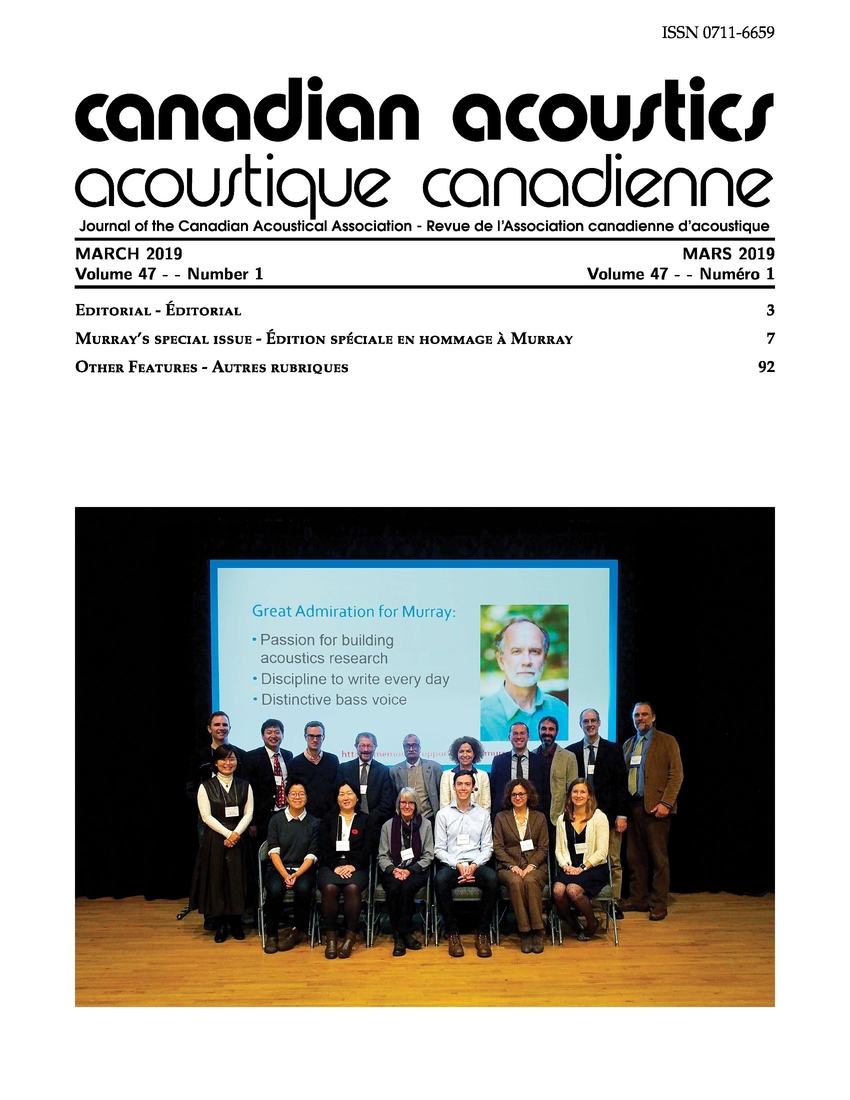Concave Surfaces and Acoustics of Performance Spaces Part II – Wave Analysis
Keywords:
Surfaces concaves, focalization, théorie des ondes, répartition des niveaux de pression sonore, , simulation acoustique.Abstract
Conventional wisdom states that having concave surfaces as the envelope of any occupied space does not produce good sound. The focussing effect of concave surfaces can cause high sound pressure levels, coloration, and echoes. However, throughout history there have been many enclosed rooms with large curved surfaces as envelopes that seem to produce good acoustics. Recent research suggested that wave analysis must be undertaken to establish the impact of concave surfaces. In contrast to Part I of the current investigation, evaluation of the sound pressure level distribution, in rooms with concave surfaces, was performed by solving the governing wave equation. The main reason is that the image-ray theory is valid only at frequencies greater than the Schroeder cut-off frequency. The wave theory is used for frequencies lower than 100 Hz. Finite element modelling was applied to solve for the sound pressure level distribution within rooms with concave surfaces. Three spaces, the Paul Cocker Gallery in Ryerson University, Toronto, St. Pauls Anglican Church in Toronto and Wigmore Hall in London were investigated in this study. The results for three low frequencies (25 Hz, 50 Hz and 100 Hz) as well as their combination will be presented in this paper.
Additional Files
Published
How to Cite
Issue
Section
License
Author Licensing Addendum
This Licensing Addendum ("Addendum") is entered into between the undersigned Author(s) and Canadian Acoustics journal published by the Canadian Acoustical Association (hereinafter referred to as the "Publisher"). The Author(s) and the Publisher agree as follows:
-
Retained Rights: The Author(s) retain(s) the following rights:
- The right to reproduce, distribute, and publicly display the Work on the Author's personal website or the website of the Author's institution.
- The right to use the Work in the Author's teaching activities and presentations.
- The right to include the Work in a compilation for the Author's personal use, not for sale.
-
Grant of License: The Author(s) grant(s) to the Publisher a worldwide exclusive license to publish, reproduce, distribute, and display the Work in Canadian Acoustics and any other formats and media deemed appropriate by the Publisher.
-
Attribution: The Publisher agrees to include proper attribution to the Author(s) in all publications and reproductions of the Work.
-
No Conflict: This Addendum is intended to be in harmony with, and not in conflict with, the terms and conditions of the original agreement entered into between the Author(s) and the Publisher.
-
Copyright Clause: Copyright on articles is held by the Author(s). The corresponding Author has the right to grant on behalf of all Authors and does grant on behalf of all Authors, a worldwide exclusive license to the Publisher and its licensees in perpetuity, in all forms, formats, and media (whether known now or created in the future), including but not limited to the rights to publish, reproduce, distribute, display, store, translate, create adaptations, reprints, include within collections, and create summaries, extracts, and/or abstracts of the Contribution.


